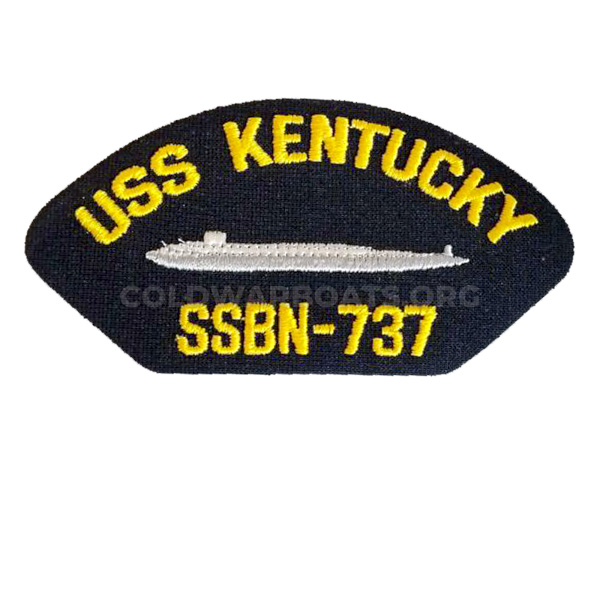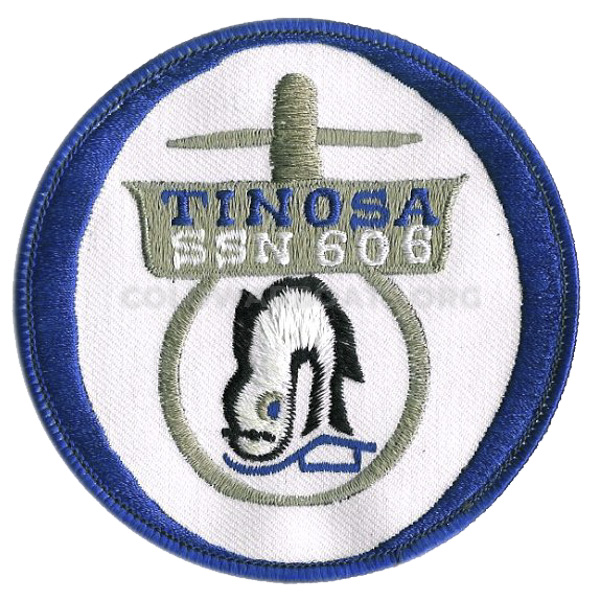Submarines are very complicated machines, so the crews get a lot of training on how to operate them. Some of this training is unique to submarines, such as the submarine escape training at sub school. One thing a lot of people don’t realize is that nukes don’t usually get to attend sub school, so we missed out on a lot of the fun stuff. It’s also rather odd that most of the engineering department, with the exception of the officers and the auxiliary mechanics, never got the benefit of submarine school training. Perhaps this is why the submarine damage control trainer was invented.
The damage control trainer is a very special training simulator, designed to replicate the experience of flooding in a submarine. Flooding is an awful thing on any ship, but at least for most sailors there has always been the option of jumping overboard or getting into a lifeboat. Submariners don’t have that option. To make things worse, flooding on a submarine is a much more serious problem than on a surface ship.
Most large ships have a great deal of extra buoyancy, so they can stay afloat even with a lot of extra water on board. Submarines are simply designed with very little extra buoyancy, and when submerged the submarine has either neutral or negative buoyancy, which is a fancy way of saying we are already sunk, so sinking further is not a good idea. It only takes a very small amount of water to send you towards the bottom of the sea, where things only get worse.
As if that were not bad enough, modern submarines operate deep below the surface (last time I checked the exact values are still classified) where the pressure of the water outside can be hundreds of pounds per square inch. This means that the smallest hole can cause a great inrush of water, and it takes both skill and speed to stop such a leak. It was important for submariners to know how to deal with this, and the only way to learn is by doing it, and practicing until you could do it right.
The simulator was built to look and feel like a typical compartment on a submarine. There is a collection of pipes, valves, and assorted equipment just like you’d find on any submarine, along with the right colors of paint, lockers and cabinets, and so forth. Two things were very different from a real submarine, however. The first thing was the windows – the simulator had windows that allowed the trainers to observe what was going on inside, so that they could control the situation from outside. The other big difference was that the pipes, valves, and other equipment were riddled with holes, cracks, and other things that would cause leakage of water into the compartment when the water pumps were turned on to simulate the pressure of the ocean.
Now I’ve never been to sub school in Connecticut, but it only makes sense that the water up there is a lot colder than in San Diego, so I’m glad that my only experience in the damage control trainer happened in San Diego. The Navy sent me to a lot of schools, but without a doubt the most memorable and fun school I ever attended was the submarine damage control school. (It also probably helped save my life and that of the whole crew, but that’s a story for another day.) The training was memorable because of the realism of the experience, but it was fun because I got to attend with a bunch of guys from the good old Battlin’ Billy Bates, some of the best guys I have ever worked with in my life. This is the story of our experience in the DC trainer.
If you’ve never been to the Submarine DC trainer course, you really missed out on something special. Here’s how it works: on the first day, you sit in a classroom for a few hours in the morning and some instructor tells you about how the machine works, how you are supposed to communicate with each other, how to signal to the simulator operators, and so forth. Then before you know it they are taking a group of you inside and LOCKING THE DOOR SHUT from the outside. And then they turn on the water pumps. You have a few minutes before the water starts to get really deep, while you are looking around to see what tools and equipment might be available to help you.
As the water level rises, you get colder and scramble about more madly. If your team is lucky enough to fix any of the leaks, it really doesn’t matter much, because the pressure just keeps getting higher and higher (as it would if you were sinking in the ocean) and eventually everyone winds up the same, swimming just to keep your head above water and hoping you don’t drown. When the water level gets about a foot from the top they shut off the pumps, then the chamber is drained down and you get to come out, dry off and change clothes. It’s called a pre-training assessment, but it’s a darn good technique for getting your full attention. Looking back it’s quite funny, but at the time it can be very frightening, and the water is really cold.
So now that the instructors have your full attention, they spend the next several days teaching and demonstrating various techniques for stopping leaks and making emergency repairs to pipes and other things. Some of it may be things you already know about, some of it is new, but mostly all of it is things you don’t practice very often. Knowing that on the last day of class you’re going back into that chamber, and the pumps will be running at twice the pressure as on the first day, you study and practice very hard.
But the instructors tell you over and over that the most important thing you will learn is not the skills for patching or clamping, but the ability to work together as a team. No individual would have a chance to survive the kind of calamity that you are about to encounter, but as a team you can succeed. If you do not work well together, you may be highly skilled individuals, but you will most assuredly find yourself up to your neck in cold water. This is one of the most important lessons about submarines and life in general that I ever learned. (If you’ve read some of my other sea stories you can see that I was long overdue for such a lesson. I wish I had gone to this course much earlier in life.)
The group that went to school with me that week was special in that we were all from the Bates, and we all worked in the engineering department. We knew each other, we were friends who respected each other and knew one another’s strengths and weaknesses. Almost everyone in that group had been on the Bates for two years or more, so we had a pretty good idea about how to use most of the equipment. We were feeling pretty confident that this would give us an edge. By the end of the week, as our final exam was coming up, we were expressing our confidence to the trainers, telling them we were going to beat their machine. They told us they were going to run the pumps at full pressure, and we might be able to fix all the leaks if we applied everything we had learned, but we should plan on getting very wet.
When that final test came, we were totally prepared. We had discussed how we would work together, and everyone performed at the highest level. Despite the fact that they ran those water pumps at full speed, we were able to shut off all the leaks when the water level was just above my knees. It was one of the proudest accomplishments in my Navy career, made all the more special because it was a team effort, not just an individual accomplishment. Every one of us did a great job, and together we achieved something really special. The trainers told us that our performance may have been the best they had ever seen, nobody could recall a team of guys who beat the DC trainer and got the water leaks shut off so quickly. The ravages of time have dimmed my memory, so that I can’t name every guy in that trainer with me, but you all know who you are.
Those were the best of times, and we sure were lucky to have that time together.






True. Doc Larry
Subscribe
Report
My comments